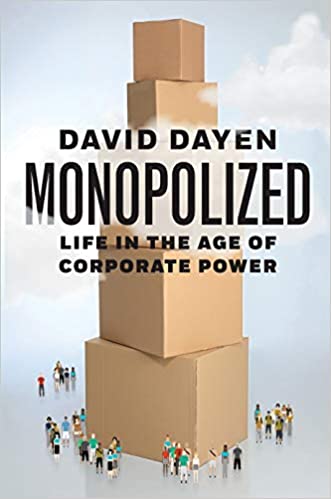You have /5 articles left.
Sign up for a free account or log in.
 Monopolized: Life in the Age of Corporate Power by David Dayen
Monopolized: Life in the Age of Corporate Power by David Dayen
Published in June 2020
Long-term, the aspect of COVID-19 that worries me most is that the pandemic will accelerate higher education concentration.
We don’t talk about this enough, but one of our higher ed ecosystem strengths is institutional diversity.
According to the National Center for Educational Statistics, in 2017, there were 4,298 degree-granting postsecondary institutions in the U.S. Of these, 1,687 are private nonprofit, 1,626 are public and 985 are private for-profit.
While the overwhelming majority of students attend public institutions (14.5 million), and just over four million enroll in private nonprofits, there are more private nonprofit than public institutions. The difference is there are lots and lots of small private nonprofit colleges, where public institutions tend to have larger enrollments.
Higher education does not get a chapter in Monopolized. Compared to concentration in the tech sector (Google captures 86 percent of search, Facebook 56 social media visit, Amazon almost half of all e-commerce sales, etc.), cable TV (three dominant providers), cellular companies (four dominant companies), etc., etc. -- higher education today offers abundant choices.
Could the same trends that David Dayen covers in Monopolized, trends that have led to concentrated markets in tech, media, pharmaceuticals, groceries, aerospace and other sectors, bring about a similar lack of options for prospective college students?
In Monopolized, Dayen argues that capitalism in the second Gilded Age tends to create both extreme inequality and concentrated ownership. The loss of competitive markets is a function both of the winner-take-most nature of platform economics and a retreat from governmental antitrust regulation and enforcement. The loss of competition means that consumers pay higher prices for lower-quality items. Concentrated ownership also results in lower employee wages and job security, as workers have fewer places to go to sell their labor.
Today, private nonprofit colleges serve a similar proportion of low-income students as public institutions. Prior to the pandemic, at least a quarter of all private nonprofit colleges were running budget deficits.
Tuition-dependent, nonwealthy private colleges were already moving into a period of enormous challenges to their sustainability, driven mostly by a combination of demographic headwinds (as the absolute numbers of high school graduates decline in the Northeast and Midwest) and rising costs.
The revenue losses and extra expenses associated with COVID-19 to nonwealthy, low-enrollment and tuition-dependent institutions have many observers worried about the economic viability of large numbers of nonprofit colleges.
Could this happen? Could higher education follow the arc of our monopolized economy?
If you had asked me this question before March of 2020, I would have answered “no.”
Colleges, I would have argued, have a long history of resiliency, flexibility and innovation. Colleges are made up of creative and mission-driven people, and the people who have run and worked at schools over the decades have almost always found a way to evolve and adapt.
Nowadays, I’m not so sure.
While higher ed will never look like big tech, I worry we could look like retail. Independent stores still exist, but they are increasingly fragile. E-commerce may account for only 12 percent of all sales today, but almost all retail growth is heading online.
In many communities and small towns, the local college is both the largest employer and the center of local cultural life. The schools that are most at risk are located in areas that can least afford to lose these colleges.
A large, varied, diverse, vibrant and economically healthy college ecosystem is good for students, faculty, staff and communities.
COVID-19 is likely to accelerate trends that will result in some substantial decline of small, private, nonwealthy and tuition-dependent schools. The merging or closing of these schools will result in a disproportionate reduction in institutional experimentation, relative to their numbers.
Reading Monopolized is a reminder of the gift of institutional diversity we currently enjoy in higher education, and what can be lost if we fail to recognize the benefits that heterogeneity brings to our sector.
Terrific book. Highly recommended.
What are you reading?








